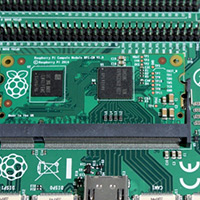

Understanding Low Iron Float Glass Characteristics and Applications
Low iron float glass, a specialized type of glass, has gained prominence in various industries due to its remarkable clarity and unique properties. Unlike standard float glass, which contains iron oxide impurities that give it a green tint, low iron float glass is produced with reduced iron content. This article delves into its characteristics, manufacturing process, and applications, highlighting why it has become a preferred choice for architects and designers.
Characteristics of Low Iron Float Glass
The primary feature of low iron float glass is its high transparency. With a light transmission level of up to 91% or more, it allows a greater amount of natural light to pass through compared to conventional glass. This exceptional clarity makes it ideal for applications where visibility is paramount, such as in display cases, windows, and glass facades.
Another significant characteristic of low iron float glass is its colorless appearance. The removal of iron oxide impurities not only enhances transparency but also eliminates the greenish tint associated with normal float glass. This property enables architects and designers to achieve a clean, modern aesthetic in their projects. When used in architectural design, the glass enhances the overall aesthetic appeal, allowing for vibrant colors and a more defined view of the surroundings.
In addition to its visual properties, low iron float glass possesses excellent physical characteristics. It is highly customizable, available in various thicknesses, sizes, and finishes, making it versatile for different applications. Whether tempered, laminated, or coated, low iron float glass can be tailored to meet specific requirements, including safety and energy efficiency.
Manufacturing Process
The production of low iron float glass follows a similar process to that of standard float glass but with a critical difference in raw materials. The use of high-purity sands, along with additives that minimize iron content, is essential in ensuring the final product's clarity. The manufacturing process involves melting the raw materials at high temperatures, typically around 1,700 degrees Celsius, which results in a molten glass.

After the melting process, the molten glass is poured onto a bed of molten tin, forming a flat surface. This method, known as the float glass process, creates a seamless and uniform thickness across the sheet. Once cooled and solidified, the glass is cut into desired sizes for storage and distribution.
The entire manufacturing process emphasizes quality control, with strict measures in place to ensure that the iron content is kept to a minimum. Advanced techniques and technologies are employed to monitor the purity of the raw materials and the characteristics of the finished product.
Applications of Low Iron Float Glass
The versatility of low iron float glass makes it suitable for various applications across different industries. In architecture and construction, it is widely used in facades, curtain walls, and skylights. Its ability to maximize natural light while providing unobstructed views transforms not only the aesthetics of buildings but also improves energy efficiency by reducing the need for artificial lighting.
In the automotive industry, low iron float glass is utilized in high-end vehicles for windows and windshields, where clarity and safety are paramount. It also finds applications in the production of glass furniture, displays for retail spaces, and high-performance solar panels. The enhanced light transmission properties of low iron glass contribute to the efficiency of photovoltaic cells, making them an appealing choice for sustainable energy solutions.
Conclusion
Low iron float glass represents a significant advancement in glass technology, offering superior clarity and aesthetic appeal. Its unique properties, combined with its versatile applications, make it an excellent choice for various industries, from architecture to automotive manufacturing. As demands for energy efficiency and sustainable design continue to rise, low iron float glass will likely play a crucial role in shaping the future of construction and product design, enhancing both functionality and beauty in our built environment. As industries increasingly recognize its benefits, low iron float glass stands poised to solidify its position as a preferred material in the glass market.